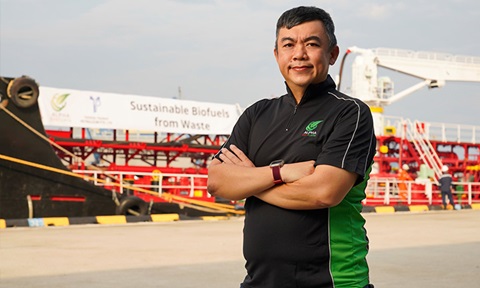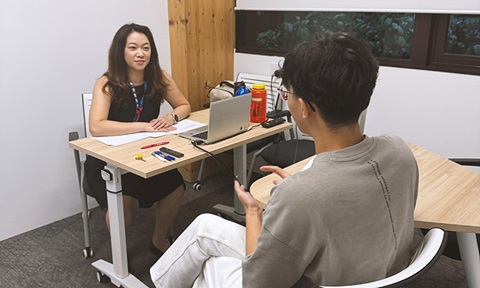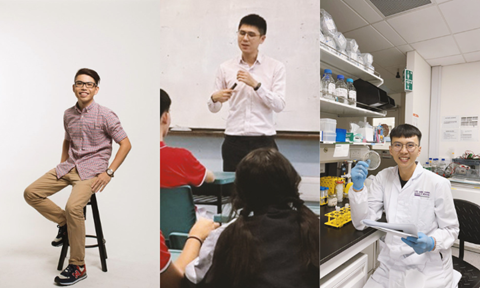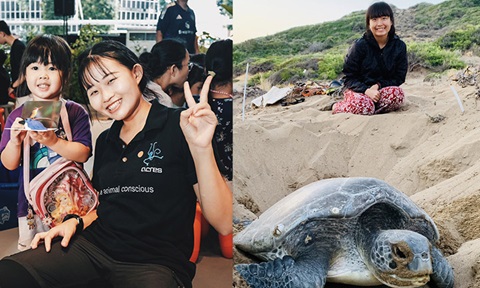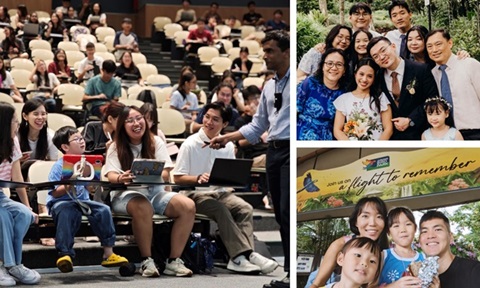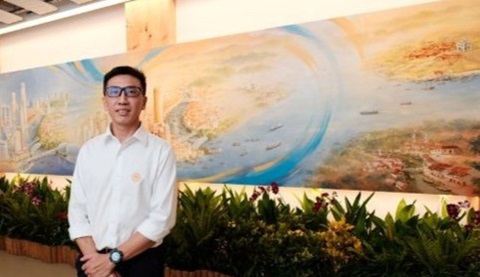Riding the MedTech wave in Asia
Two engineer-trained alumni rode the digital wave in healthcare to develop novel solutions in medical technology. Bhargav Sosale invented an AI eye disease diagnostic system, while Dr Lim Jing is in the business of 3D-printed bone and tissue implants.
By Nur Isyana Isaman
After his education in computer science at NTU, Bhargav Sosale (SCSE/2015) wanted to apply what he learned in MedTech. With his co-founder of Medios Technologies, Bhargav successfully launched the world’s first smartphone-based artificial intelligence (AI) system for detecting eye diseases in 2018.
Their AI system can test for diabetic retinopathy, glaucoma, and age-related macular degeneration. The system also semi-automates the process of retinal imaging. It operates using the built-in smartphone battery and does not require internet connection.
Medios Tech partnered with global medical institutions to train its algorithm using over 50,000 retinal images captured from different grades of camera devices and patients of different nationalities and ethnicities.
According to Bhargav, peer-reviewed publications in top medical journals such as Nature and JAMA have placed the system’s accuracy between 92% and 100%, making it more reliable than most individual doctors and competitor software.
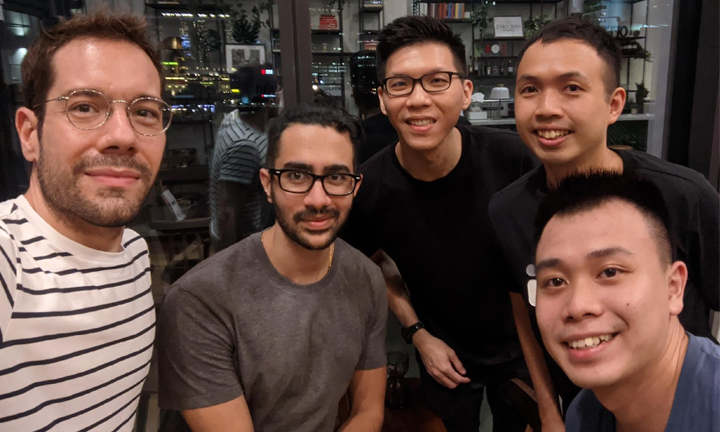 Bhargav Sosale (second from left) and his co-founder, Florian Savoy (on Bhargav’s right) and their team at Medios Technologies. (Photo credit: Bhargav Sosale)
Bhargav Sosale (second from left) and his co-founder, Florian Savoy (on Bhargav’s right) and their team at Medios Technologies. (Photo credit: Bhargav Sosale)
His start-up was acquired by Indian smart medical hardware provider Remidio in 2019.
“Development was the easier part because my co-founder and I are engineers with technical backgrounds. We knew what needed to be done to build the algorithms. The bigger challenge for us was commercialisation,” said Bhargav.
When Bhargav was ready to commercialise the product five years ago, there was still scepticism about using AI for medical purposes. There were also concerns about doctor liability in the case of a wrong diagnosis by the AI system, and AI technology replacing human doctors.
Bhargav believes that human doctors are still needed to provide treatments and counsel patients. He also believes that AI will improve doctors’ productivity and increase healthcare accessibility.
“A key challenge was affordability. Many patients in rural areas cannot pay for eye tests, let alone an AI-powered one. Thus, we have been working with corporate donors and pharmaceutical companies to subsidise the tests,” said the 30-year-old.
Medios’ AI systems have been deployed with Remidio devices in over 20 countries, including India, the United States and Singapore. A new algorithm to detect retinopathy of prematurity has been developed and will be launched soon.
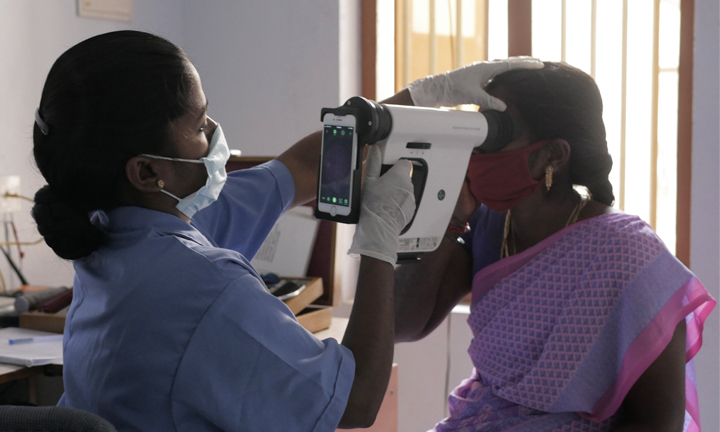 The world’s first smartphone-based AI system to detect eye diseases, developed by Singapore-based Medios Technologies. (Photo credit: Bhargav Sosale)
The world’s first smartphone-based AI system to detect eye diseases, developed by Singapore-based Medios Technologies. (Photo credit: Bhargav Sosale)
Overcoming scepticism
While Bhargav had to manage patient’s concerns, Dr Lim Jing (CCEB/2015) had to convince the surgeons about his cutting-edge MedTech products. The 38-year-old CEO and Chief Technology Officer of Osteopore leads his company to design, manufacture and distribute regenerative bone and tissue implants which are 3D-printed using biocompatible plastic.
“Our implants are unique as they allow patients’ bones to regenerate themselves while the plastic dissolves harmlessly in their body. After recovery, patients are left with their own bones without any foreign material, thus reducing post-surgery complications compared to permanent implants,” explained Dr Lim.
Dr Lim conducted research on biomaterials for tissue engineering and regenerative medicine during his research days. After completing his PhD degree at the NTU School of Chemical and Biochemical Engineering (now known as CCEB), Dr Lim’s thesis supervisor Prof Teoh Swee Hin offered him a role at his start-up, Osteopore, in 2014 as a product development engineer.
“Our 3D implants were perceived as too good to be true since many surgeons had been using legacy technology such as titanium plates. Not only did we have to prove that our implants work, but that they are safe for use and address their clinical needs. Therefore, we had to gather enough clinical evidence and conduct continuous engagement and education with the surgeons to ensure they understand how the implants work,” said Dr Lim.
Serving patients globally
Dr Lim’s team have catered their products to hospitals and surgeons in 25 countries. Their largest markets are Vietnam, Korea, and Singapore.
From the company’s beginning in 2003 to the end of 2023, Osteopore’s implants have benefitted over 100,000 patients globally.
“The earliest application of our implants was for bones in neurosurgery and orbital surgery. In the last six years, we developed applications for rhinoplasty, which involves cartilage. We have also developed implants for dental bone regeneration. Then, we went into orthopaedics, which includes hard and soft tissues,” said Dr Lim.
 Osteopore specialises in 3D-printed regenerative implants. (Photo credit: Osteopore)
Osteopore specialises in 3D-printed regenerative implants. (Photo credit: Osteopore)
Remembering their mentors
Dr Lim was an NTU research scholar and gives back to his alma mater by hiring NTU juniors at Osteopore. He also spent the first few years after graduation to mentor final-year PhD students.
“While pursuing my engineering PhD at NTU under Prof Teoh Swee Hin’s guidance, I was exposed to multiple research fields from cancer therapy to cell alignment. Being able to manage the breadth of research work then has nurtured me into an agile and adaptable leader today in leading my company,” said Dr Lim.
 Dr Lim Jing (first from left) with his NTU juniors. (Photo credit: Dr Lim Jing)
Dr Lim Jing (first from left) with his NTU juniors. (Photo credit: Dr Lim Jing)
While Dr Lim joined the company founded by his mentor Prof Teoh, Bhargav was inspired by two professors at NTU, Prof Mark Yong and Prof Bo An.
The SIA-NOL undergraduate scholarship recipient said, “Prof Mark Yong played a big role in spurring me into entrepreneurship. When he co-founded Garuda Robotics, it made me realise that I should be more daring to take risks and pursue my interest.”
“Prof Bo An piqued my interest in AI, way before it was an industry buzzword. He gave me a great opportunity to publish and present my final-year project at an international conference. I was the only undergraduate student there. That experience pushed me deeper into the AI field and became part of the reason I decided to co-found an AI company to make a change through my work.”


